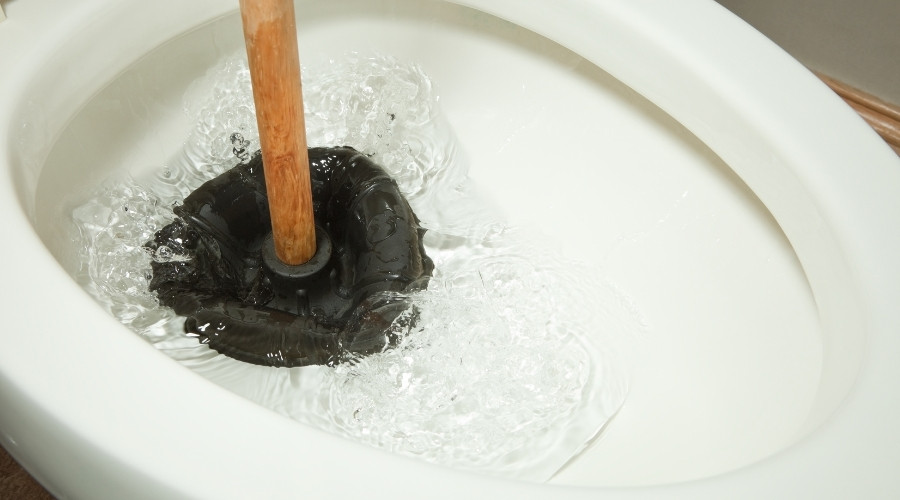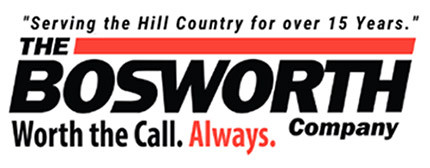Ways to Help Prevent the Toilet From Clogging
Few things disrupt a day faster than a clogged toilet. The good news is that a handful of consistent habits can greatly reduce the risk of a toilet clog while keeping fixtures running smoothly. This guide explains what should and should not be flushed, how toilet paper use affects drainage, and how sewer line issues can lead to recurring problems that necessitate professional drain cleaning or clogged toilet repair.
Be Careful About What Gets Flushed
 A toilet is not designed to handle general household waste, and limiting what goes down the bowl is the fastest way to prevent a clogged toilet. Only human waste and toilet paper belong in the drain path; most other materials don’t break down quickly enough and can bind together inside bends and fittings.
A toilet is not designed to handle general household waste, and limiting what goes down the bowl is the fastest way to prevent a clogged toilet. Only human waste and toilet paper belong in the drain path; most other materials don’t break down quickly enough and can bind together inside bends and fittings.
Paper towels and facial tissues remain strong when wet and can wedge in narrow passages. Items such as wipes (even those labeled “flushable”), cotton swabs, dental floss, and feminine hygiene products tend to snag and create dense obstructions that trap additional debris. Once caught in the trapway or further along sewer pipes, these materials often escalate into blockages that plungers can’t clear.
A small waste bin located near the toilet encourages the proper disposal of non-flushables. Clear reminders in guest baths also help reduce accidental flushing of problem items. When recurring clogs persist despite good habits, an inspection may reveal buildup beyond the fixture—an early sign of a developing sewer line clog that calls for targeted drain cleaning to restore smooth flow.
Use Less Toilet Paper
 Toilet paper is essential, but excess use is a common cause of a toilet clog. Large wads absorb water, expand, and are more likely to lodge in the trap or the first several feet of pipe. Folding paper into a flat pad instead of wadding reduces bulk and allows easier travel through the drain. When usage is higher than usual, flushing in stages helps break the volume into manageable portions.
Toilet paper is essential, but excess use is a common cause of a toilet clog. Large wads absorb water, expand, and are more likely to lodge in the trap or the first several feet of pipe. Folding paper into a flat pad instead of wadding reduces bulk and allows easier travel through the drain. When usage is higher than usual, flushing in stages helps break the volume into manageable portions.
Product choice matters as well. Ultra-thick or heavily quilted toilet paper tends to dissolve more slowly, increasing the likelihood of a clogged toilet in low-flow fixtures or older piping. Quick-dissolving varieties and moderated use support reliable performance. In households where rolls disappear rapidly, a simple guideline—reasonable amounts per flush and a mid-flush when necessary—can significantly reduce clogs without sacrificing cleanliness.
If slow clears or recurring backups continue even with careful habits, the issue may be less about paper and more about downstream restrictions. Scale, partial obstructions, or early indications of a clogged sewer line can cause even ordinary amounts of toilet paper to become clogged. Professional drain cleaning can clear interior pipe buildup and reduce repeat incidents.
Prevent Sewer Line Clogs
Sometimes the toilet is not the main culprit—a blockage in the main sewer line can trigger backups across multiple fixtures. When a sewer line clog forms, wastewater follows the path of least resistance and often reappears through lower-level drains. Tree roots drawn to moisture, accumulated wipes and grease, or aging sewer pipes with rough interiors are frequent contributors to a clogged sewer line.
Prevention focuses on smart use and periodic evaluation. Keeping wipes, hygiene products, and grease out of drains limits the materials that tend to accumulate in the main line. Landscaping choices near buried lines also matter; root-prone species can infiltrate joints and constrict flow. When signs of widespread slow draining or gurgling arise, an assessment of the sewer line helps pinpoint the cause and location of the obstruction.
Because main-line issues are located deep in the system, household chemicals and plungers rarely reach the problem. Professional drain cleaning methods can open and restore flow effectively. If a video inspection identifies damaged or misaligned sections, targeted repair of the sewer line may be recommended to prevent recurring blockages and protect the interior from wastewater intrusion. Restoring full capacity in the main line supports all fixtures and reduces the risk that a single flush will trigger another toilet clog.
About The Bosworth Company Kerrville
The Bosworth Company Kerrville is a leading plumbing and HVAC company with a long history of providing high-quality service to the communities of Kerville and beyond. They are licensed and insured, only hire knowledgeable, background-checked technicians, and offer a 100% customer satisfaction guarantee. Call them today for clogged toilet repair in Kerrville, TX.




